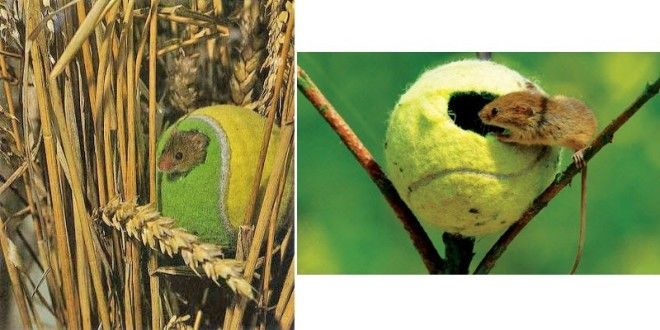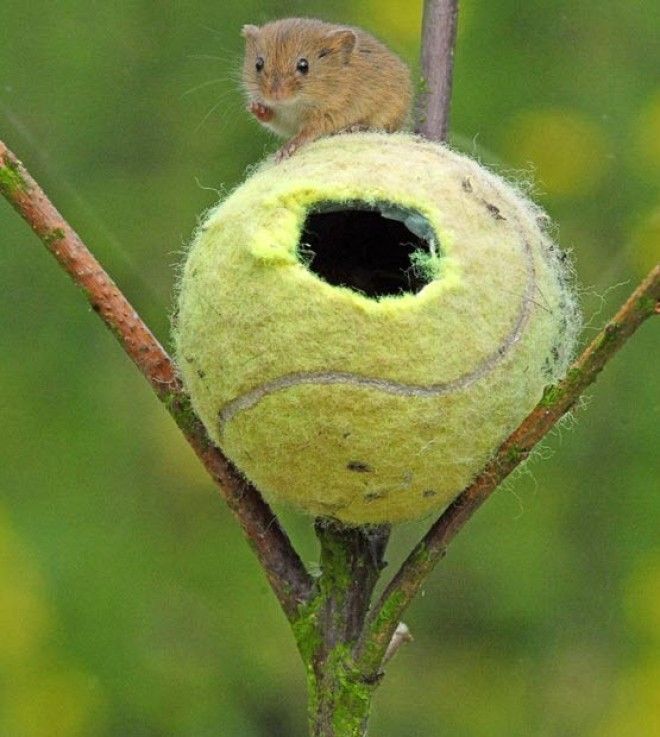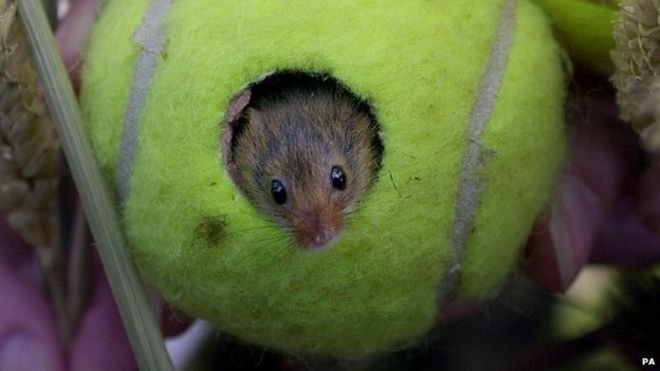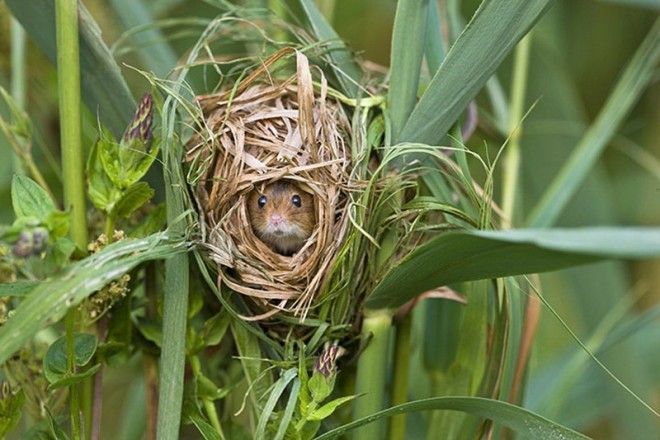Used balls are resold every day at the club to spectators on the grounds, and nearly 700 balls go missing every year, probably taken by the audience and kept as souvenirs. Since 2001, some of these balls are being donated to various animals conservatives around Britain who make cute little homes for harvest mice.
The Eurasian harvest mouse is typically found in fields of cereal crops, such as wheat and oats, in reed beds and in other tall ground vegetation, such as long grass. An adult mouse weighs as little as 4 grams. The mice normally weave their homes out of shredded grass and reeds, attached to stems well above the ground.
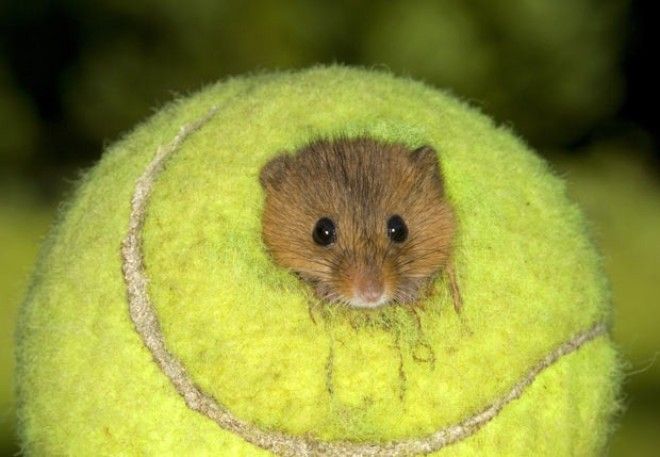
In recent years, their habitat has come under increasing threat from intensive farming methods. Yearly floods also destroy their homes.
Some animal conservatives then discovered that tennis balls make excellent, waterproof homes for these tiny rodents once you cut a small hole into the balls. The balls are attached to poles about a meter or a meter-and-half off the ground where they can make their nests in relative safety from birds of prey and weasels, which are too big to get through the hole.
Now aside from Wimbledon, many lawn tennis clubs around the United Kingdom regularly donates used tennis balls to various wildlife conservation organizations to help them in their conservation efforts.
